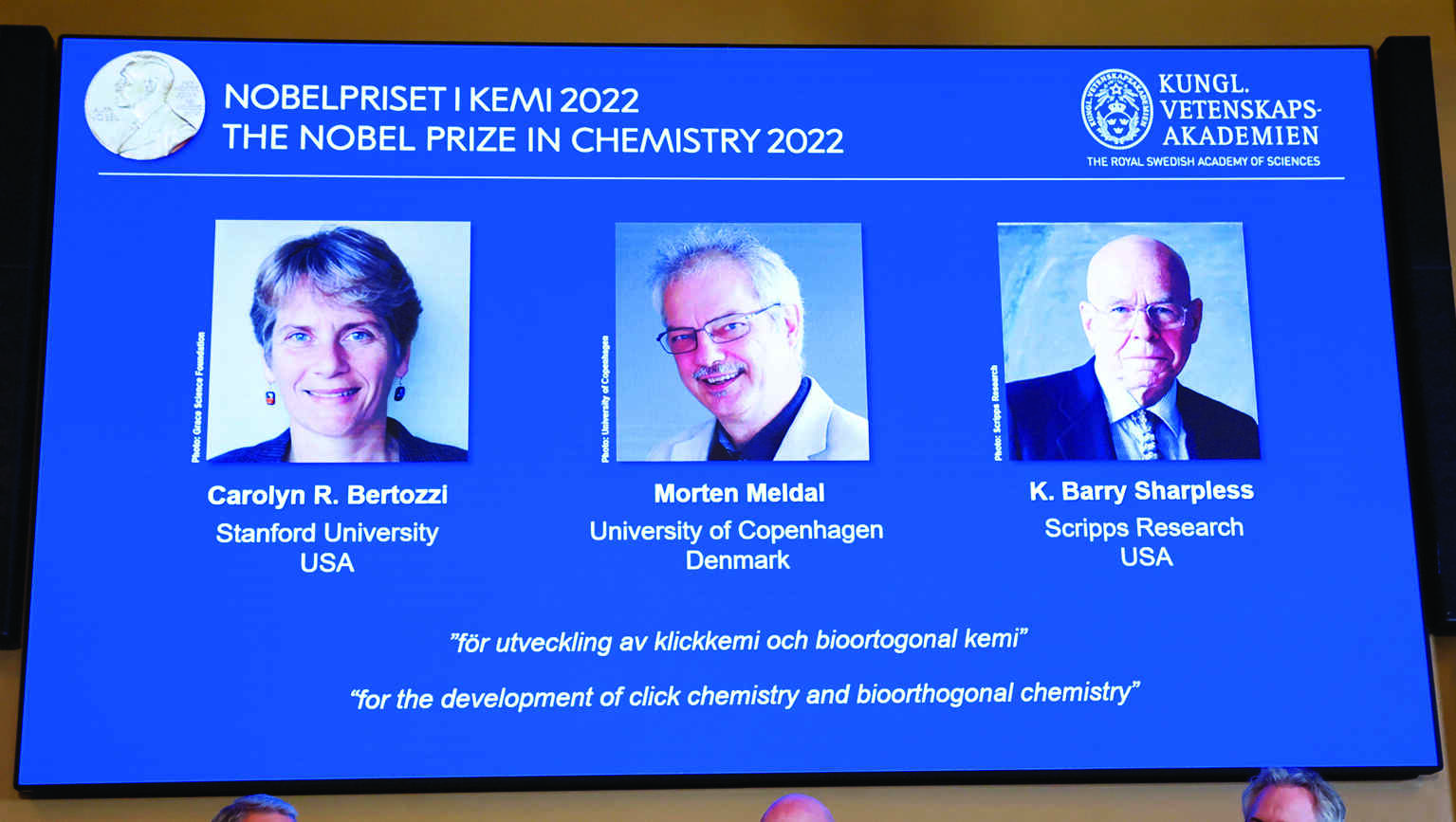Nobel prize in chemistry awarded to 3 scientists who made molecules 'click'

Stockholm: Three scientists were jointly awarded this year's Nobel Prize in chemistry on Wednesday for developing a way of snapping molecules together that can be used to design better medicines, including ones that target diseases such as cancer more precisely.
Americans Carolyn R. Bertozzi and K. Barry Sharpless, and Danish scientist Morten Meldal were cited for their work on click chemistry and bioorthogonal reactions, which are used to make cancer drugs, map DNA and create materials that are tailored to a specific purpose.
It's all about snapping molecules together, said Johan Aqvist, a member of the Royal Swedish Academy of Sciences that announced the winners at the Karolinska Institute in Stockholm.
Sharpless, 81, who previously won a Nobel Prize in 2001 and is now the fifth person to receive the award twice, first proposed the idea of connecting molecules using chemical buckles around the turn of the millennium, Aqvist said.
The problem was to find good chemical buckles, he said. They have to react with each other easily and specifically.
Meldal, 68, based at the University of Copenhagen and Sharpless, who is affiliated with Scripps Research in California, independently found the first such candidates that would easily snap together with each other but not with other molecules, leading to applications in the manufacture of medicines and polymers.
Bertozzi, 55, who is based at Stanford University took click chemistry to a new level, the Nobel panel said.
She found a way to make the process work inside living organisms without disrupting them, establishing a new method known as bioorthogonal reactions. Such reactions are now used to explore cells, track biological processes and design drugs that can target diseases such as cancer more precisely.
"Doing chemistry inside human patients to make sure that drugs go to the right place and stay away from the wrong place, Bertozzi explained.
Speaking by phone at a news conference following the announcement, Bertozzi said she was absolutely stunned to receive the prize. I'm still not entirely positive that it's real, but it's getting realer by the minute, she said.
Meldal said he received the call from the Nobel panel about half an hour before the public announcement. They ... told me not to tell anyone," he said, adding that he just sat in his office, shaking a bit. "This is a huge honor.
Meldal started out as an engineer, "but I wanted to understand the world so I thought chemistry would give me the solutions.
Jon Lorsch, director of the U.S. National Institute of General Medical Sciences, which supports the work of Bertozzi and Sharpless, described click chemistry and bioorthagonal chemistry as sort of like molecular Lego you have a group on one molecule that specifically attaches to a group on another molecule," like Lego clicking together. That makes it possible to attach molecules in very specific pre-defined ways," he said, and gives scientists a very precise tool to build complex new molecules that can be used for drugs, synthetic materials and other uses.



